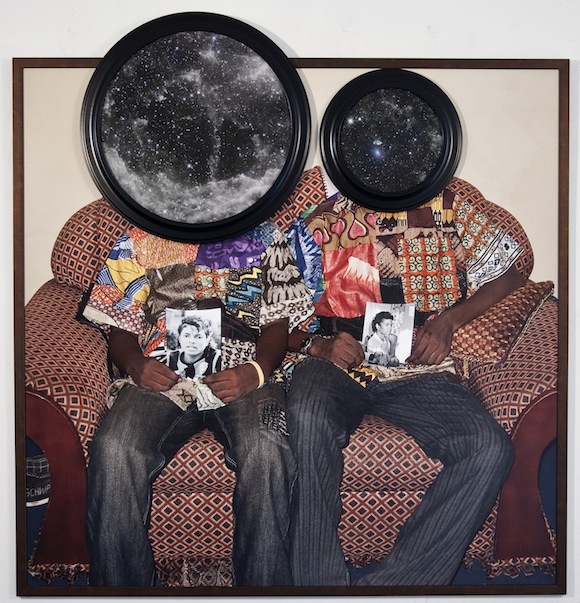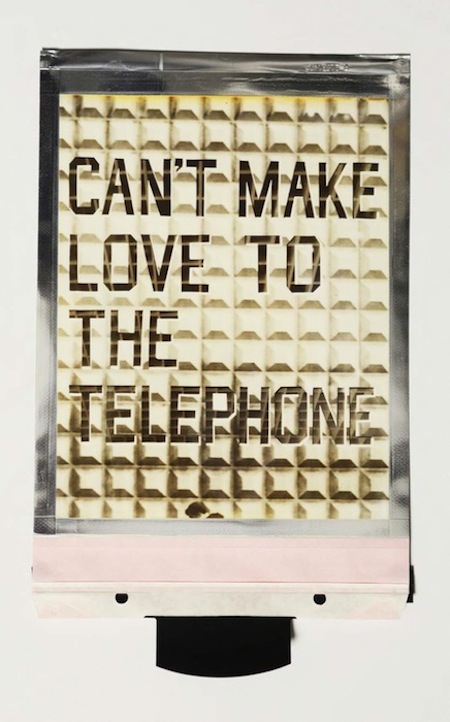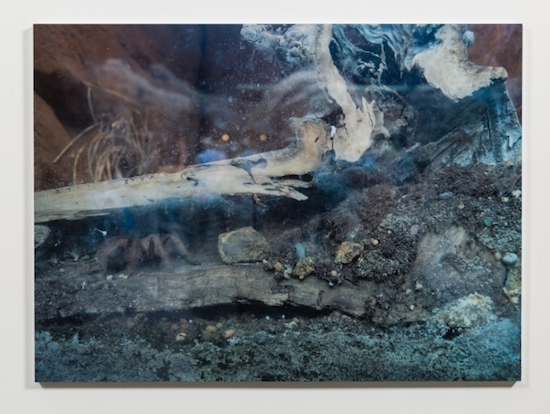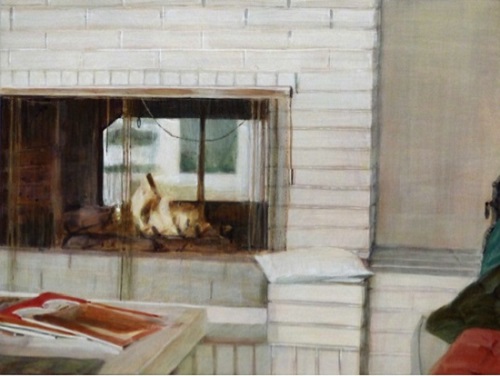
David Warsh: Trying to make sense of Trump's frenzy of actions
"The Plot Thickens (silver shade instant film), by Corey Escoto, in his show "A Routine Pattern of Troubllng Behavior,'' at Samson Gallery, Boston, through April 1.
The Carnegie Museum of Art observed: 'The two- and three-dimensional works of Corey Escoto meditate on the production and consumption of illusion, both in terms of what we accept as photographic truth and, more broadly, how we distinguish fact from fiction in an ever more manipulated, media-saturated world.''
SOMERVILLE, Mass.
The new president has been throwing up all kinds of ideas, orders and initiatives, presumably in hopes that some will find favor with Congress. How to understand what he’s doing? I read some careful newspaper stories, each very good, all slightly different. (WSJ: “Trump’s Week One Off Script”. WP: “Reality Check: Many of Trump’s early vows will probably never happen”. NYT: “Misfires, Crossed Wires, and a Satisfied Smile in the Oval Office”. FT: “A Whirlwind Week in the White House”.) The single most useful insight I came across was that of Politico’s Eliana Johnson, speaking on National Public Radio’s On Point:
“The way to think about this government is sort of like a coalition government, where you’ve got the populist nationalist president in the White House [who’s] going to agree with the Republican majority in Congress on some things, [as] he’s going to agree with Democrats in Congress on other things, but there isn’t a party in Congress that he aligns or sees eye-to-eye with on everything, that’s going to be able to ram through legislation. Same with his cabinet secretaries – they disagree with him on many, many things. I don’t think he nominated secretaries who are pushovers.’’
Of the bewildering array of first steps Trump proposed, none was more interesting to me than a foreign policy initiative when he was expected to call Vladimir Putin, Angela Merkel and Francois Hollande. What might he have said? For many years I’ve thought that Jack Matlock, the career Foreign Service officer who was George H.W. Bush man in Moscow, has understood the situation particularly well. He is the author of Autopsy on an Empire: The American Ambassador’s Account of the Collapse of the Soviet Union (Random House,1995) and Superpower Illusions: How Myths and False Ideologies Led America Astray – and How to Return to Reality (Yale, 2010). Matlock took to his blog to propose a four-paragraph communique for afterwards:
“The presidents agreed that there is no good reason to consider their countries enemies and there are compelling reasons for the United States and Russia to cooperate in solving common problems.
“The presidents recognize that a nuclear war would be catastrophic for humanity, must never be fought, and that their countries bear a special responsibility to cooperate to reduce the nuclear danger and prevent further proliferation.
“Regarding specific issues, they agree to begin, on an urgent basis, consultations with each other and with allies and neighbors regarding ways in which current confrontations could be replaced by cooperation.
“One question that will inevitably arise regards the continuation of U.S. sanctions on Russia. In [Matlock’s] view, these sanctions are now doing more harm than good, but [he] would hope that decisions regarding them would be made in concert with U.S. allies, who have been pressed by the United States to adopt them. Perhaps President Trump could state that he agrees that sanctions are incompatible with the sort of relationship he seeks with Russia, and he intends to explore ways to create conditions that make them unnecessary.’’
It is anybody’s guess which of those among of the frenzy of proposals emanating from the White House might eventually become the basis for blueprints for action. I can’t fault the method the president chose. Throwing much against the wall in hopes that something will stick is an approach to dire circumstances previously associated mainly with Franklin Delano Roosevelt. (Of course, then it was the nation’s circumstances, not the president’s, that were dire.) WSJ columnist Peggy Noonan and Joshua Green, writing in Bloomberg Businessweek, think that Trump is seeking to create a “workers’ party,” composed of “those who haven’t had a real wage increase in the last eighteen years.” I don’t think the populist nationalist in the White House is going to get very far with that.
David Warsh, a longtime financial journalist and economic historian, is proprietor of economicprincipals.com, where this first appeared.
This is not a proper introduction
"BITS Bayside 5'' (archival inkjet, silkscreen, palladium leaf on paper), by Gabriel Martinez at Samson Gallery, Boston.
'Afrofuturist aesthetic'
| "Coast Cosmos'' (archival pigment prints, wood frames), by TODD GRAY, in his show "Caliban in the Mirror: Exquisite Terribleness,'' at the Samson Gallery, Boston, May 1-June 13. |
|
The gallery says: "Gray’s transcontinental studio practice is informed by cultural hybridity, body politics, and global pop culture. Pulling from his archive of documentary images taken in Ghana, and photographs taken as personal photographer to Michael Jackson in the 80’s, Gray produces temporal and spatial schisms by juxtaposing decontextualized images in overlapping, found frames in low relief compositions. In afrofuturist aesthetic, he combines sculpture and photography to create ambiguous 'third' objects that provide the viewers with a multiplicity of perspectives of layered space and time that aid in problematizing singularity.''
Whew! |
May 1 - June 13
Artist Reception: May 1st from 6 to 8pm











